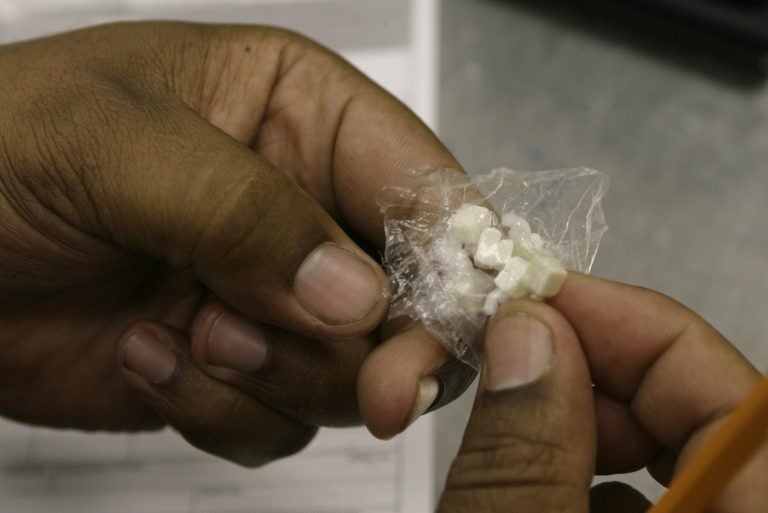Why the crack epidemic and ‘tough on crime’ still linger
Two New Jersey reporters found that blacks are still arrested at higher rates for cocaine than whites are for opioids.
Listen 14:19
A Los Angeles Police Officer counts the number of doses of Crack cocaine, as he files an evidence police report Tuesday, Oct. 10, 2006. (AP Photo/Damian Dovarganes)
Listen to The Why wherever you get your podcasts:
Apple Podcasts | Google Podcasts | Stitcher | RadioPublic | TuneIn
‘Tough on crime’ policies instituted in the 1980s to address the crack epidemic disproportionately affected African Americans. With the rise of the opioid crisis, attitudes about punishment have largely shifted. Now, people struggling with addiction are treated more like patients who need treatment than criminals who deserve jail time. But Asbury Park Press reporters Shannon Mullen and Austin Bogues explain why vestiges of the crack epidemic remain in drug enforcement today — and still hurt black people.
WHYY is your source for fact-based, in-depth journalism and information. As a nonprofit organization, we rely on financial support from readers like you. Please give today.






